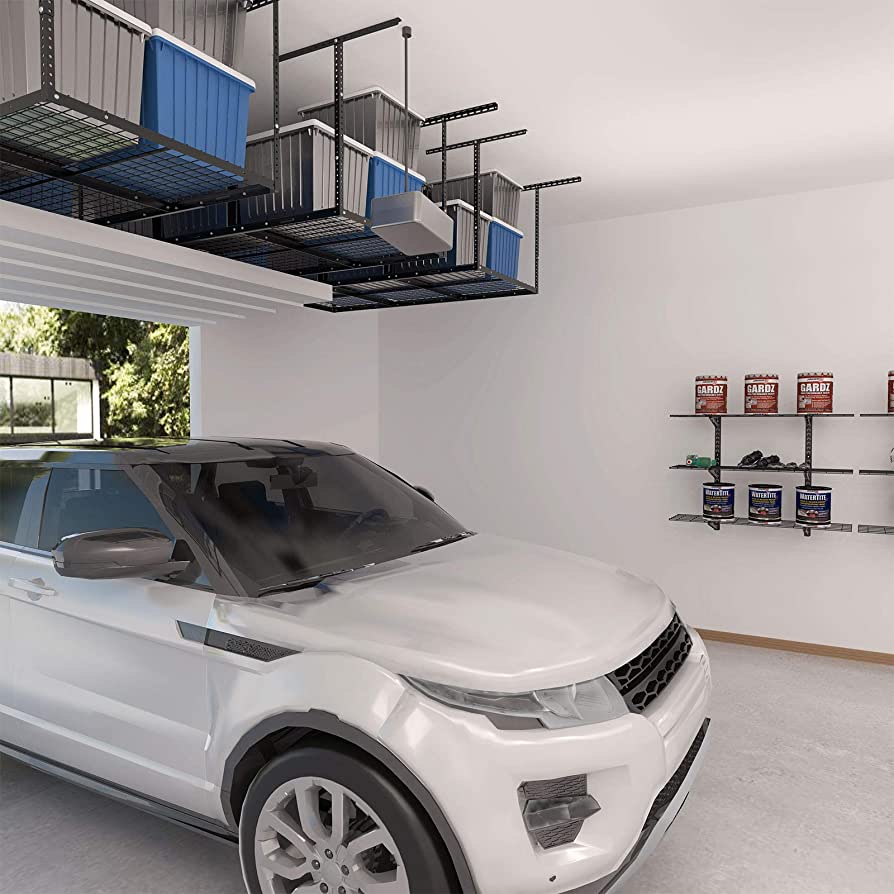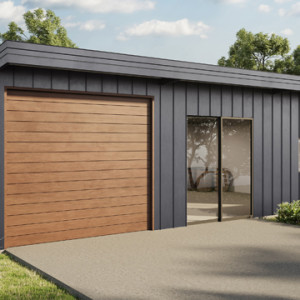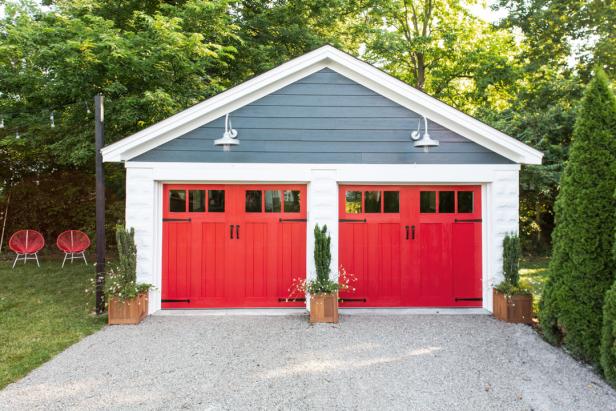
Attached garage plans are great for anyone looking to build a home or expand an existing one. The garages can be constructed in many styles to fit your needs, including rustic and modern. Many garage designs also have the option to add a second level, which makes them great for adding extra living space.
Attached Garage plan: The Right Size to Meet Your Needs and Budget
You can decide how big your garage will be. You can decide how many cars you want to park there and what type of storage space you need. It is also important to decide whether you want the storage space to be attached to your home or to a separate structure.
Another important factor to consider is the type of materials you want to use for your garage. There are many options available for materials, from metal to wood. Every material has its advantages and disadvantages, so it is important to know what your requirements are before you start construction.

Garage Addition Design: Adding on to your garage is an excellent way to increase your house's value and improve the appeal of your property. This is a great way for you to create extra space, such as an office or private gym.
SinelHousePlans has an excellent plan (plan number 116-994) that is suitable for people with smaller yards and who don't want to build a two-story garage. It features a 22-foot-by-24-foot garage that can fit up to two standard vehicles, and it also has a mudroom and breezeway that connects it to your home.
Garage Extension Design: The first step to building an addition is to have the plans approved and stamped by a local official. The official will inspect and verify that the plans comply with all applicable building codes. This can be time-consuming but will give you peace of mind.
You will need to hire a contractor to make sure that the garage meets your needs. Before you start the project, it's a good idea get a price estimate.

It is important to know all details before starting construction of a garage extension. This will prevent costly errors down the road.
You should also consider the layout of your electrical outlets and where you'll put shelving. It can make all the difference in how you use your garage. It will be necessary to have enough space for a table or other items. Planning ahead can make it easier to put in.
Garage extensions can be a great solution for those who are on a budget or don't have time to remodel their homes. This is a good option for anyone who has a family and needs extra space.
FAQ
How can you tell if your house needs renovations or a remodel?
First, look at how recent your home has been renovated. You might want to renovate if you haven’t had any home updates in several years. If your home appears brand-new, you might consider a renovation.
A second thing to check is the condition of your house. A renovation may be necessary if your home has holes in its drywall, cracked wallpaper, or missing tiles. However, if your home looks great, then maybe it's time to consider a remodel.
Also, consider the general condition of your property. Is it structurally sound? Do the rooms look clean? Are the floors well-maintained? These are essential questions to consider when choosing the type of remodeling you want.
What would it cost for a home to be gutted versus what it would cost to build one?
The process of gutting a house involves removing all contents inside the building. This includes walls, floors and ceilings, plumbing, electrical wiring and appliances. It's usually done when you're moving into a new place and want to make some changes before you move in. It is often very costly to gut a home because of all the work involved. Depending on your job, the average cost to gut a home can run from $10,000 to $20,000.
Building a home is where a builder builds a house frame by frame, then adds walls, flooring, roofing, windows, doors, cabinets, countertops, bathrooms, etc. This is usually done after buying a lot of lands. Building a home is normally much less expensive than gutting, costing around $15,000-$30,000.
When it comes down to it, it depends on what you want to do with the space. If you want to gut a home, you'll probably need to spend more because you'll be starting over. If you're building your home, however, you don't have to tear everything down and start over. You can design it yourself, rather than waiting for someone else.
What should my cabinets look like?
It depends on whether your goal is to sell or rent out your house. If you intend to sell your home, you will likely need to remove and refinish cabinets. This gives buyers a feeling of newness and allows them to visualize their kitchens when they move in.
However, if you want to rent your house, you should leave the cabinets alone. Many tenants complain about cleaning up after their previous tenants, including greasy fingerprints and dirty dishes.
You could also paint the cabinets to give them a fresh look. Be sure to use high quality primer and paint. Low-quality paints can peel off over time.
What are the most expensive expenses for remodeling a kitchen.
There are several major costs involved in a kitchen remodel. These include demolition, design fees, permits, materials, contractors, etc. But when we look at these costs individually, they seem pretty small. But when you combine them, they quickly add up to be quite significant.
Demolition is usually the most expensive. This includes the removal of old cabinets, countertops, flooring, and appliances. The insulation and drywall must be removed. You must then replace these items with new ones.
Next, hire an architect who will draw plans for the space. To ensure your project is compliant with building codes, you will need to pay permits. The final step is to find someone to carry out the actual construction.
Once the job has been finished, you need to pay the contractor. Depending on the size of the job, you could spend between $20,000 to $50,000. This is why it's important to get estimates form multiple contractors before hiring one.
You can sometimes avoid these costs if you plan. You may be able get better material deals or to skip some of the work. If you know what needs to be done, you should be able to save time and money during the process.
Many people attempt to install cabinets themselves. They think this will save money because they don't have to pay for professional installation services. They often spend more trying to install cabinets themselves. A job can typically be done in half the time than it would take for you by professionals.
You can save money by buying unfinished materials. It is important to wait until all pieces have been assembled before buying pre-finished materials, such as cabinets. Unfinished materials can be used immediately by you if purchased. And you can always decide to change your mind later if something does not go according to plan.
Sometimes, it's just not worth the effort. Remember: the best way to save money on any home improvement project is to plan.
Remodeling a kitchen or bathroom is more expensive.
Remodeling a kitchen or bathroom is a costly undertaking. It may make more sense to spend money on home improvements, considering how much you pay in energy bills each month.
You could save thousands each year by making a small upgrade. Simple improvements such as insulation of walls and ceilings can lower heating and cooling costs up to 30 percent. Even a modest addition can improve comfort and increase resale value.
Remember to choose durable and easy-to maintain products when you are planning your renovations. Materials like porcelain tile, solid wood flooring, and stainless-steel appliances will last longer and need fewer repairs than vinyl countertops.
You may also find that replacing old fixtures with newer models can help cut utility expenses. Low-flow showerheads or faucets can help reduce water usage by up 50 percent. Replacing inefficient lighting with compact fluorescent bulbs can cut electricity consumption by up to 75 percent.
What is the difference between renovation and remodel?
A remodel is major renovation to a room, or a portion of a rooms. A renovation is minor changes to a room, or a portion of a bedroom. A bathroom remodel, for example, is a major undertaking, while a new sink faucet is minor.
Remodeling involves the complete or partial renovation of a room. Renovating a room is simply changing one aspect of it. Kitchen remodels can include changing countertops, sinks, appliances and lighting. However, a kitchen renovation could include changing the color of the wall or installing a light fixture.
Statistics
- 5%Roof2 – 4%Standard Bedroom1 – 3% (rocketmortgage.com)
- 57%Low-end average cost: $26,214Additional home value: $18,927Return on investment: (rocketmortgage.com)
- According to a survey of renovations in the top 50 U.S. metro cities by Houzz, people spend $15,000 on average per renovation project. (rocketmortgage.com)
- 55%Universal average cost: $38,813Additional home value: $22,475Return on investment: 58%Mid-range average cost: $24,424Additional home value: $14,671Return on investment: (rocketmortgage.com)
- Following the effects of COVID-19, homeowners spent 48% less on their renovation costs than before the pandemic 1 2 (rocketmortgage.com)
External Links
How To
How to Remove Tile Grout from Floor Tiles
Most people don’t realize they use tile grouting. It is used for sealing the joints between tiles. Many different types of grout are available today, each using a specific purpose. This article will teach you how to remove tile grout off floor tiles.
-
Before you begin this process, it is important to make sure you have all of the necessary tools. It is best to have a grout cutter, grout scraper, and some towels.
-
Now you must clean any dirt or debris under the tile. The grout cutter can be used to cut the grout and remove any loose tiles. You must be careful not to scratch any tiles.
-
After cleaning everything, take out the grout scraper. Use it to clean up any grout left behind. Step 4 can be completed if you have no grout.
-
After all the cleaning is done, it's time to move on. You can now take one of the rags, and soak it in some water. Make sure the rag is fully wet. To ensure that the rag does not absorb water, dry it.
-
Place the wet cloth on the joint where the tile meets with the wall. Continue pressing down on the rag until you see the grout begin to fall apart. Slowly pull down on the rag until it is pulled towards you. Continue pulling it backwards and forwards until all the grout has been removed.
-
Continue repeating steps 4 through 5 until all grout is removed. Rinse the ragout and repeat the process if necessary.
-
When you are done removing grout, clean the tiles using a damp cloth. Let dry thoroughly.